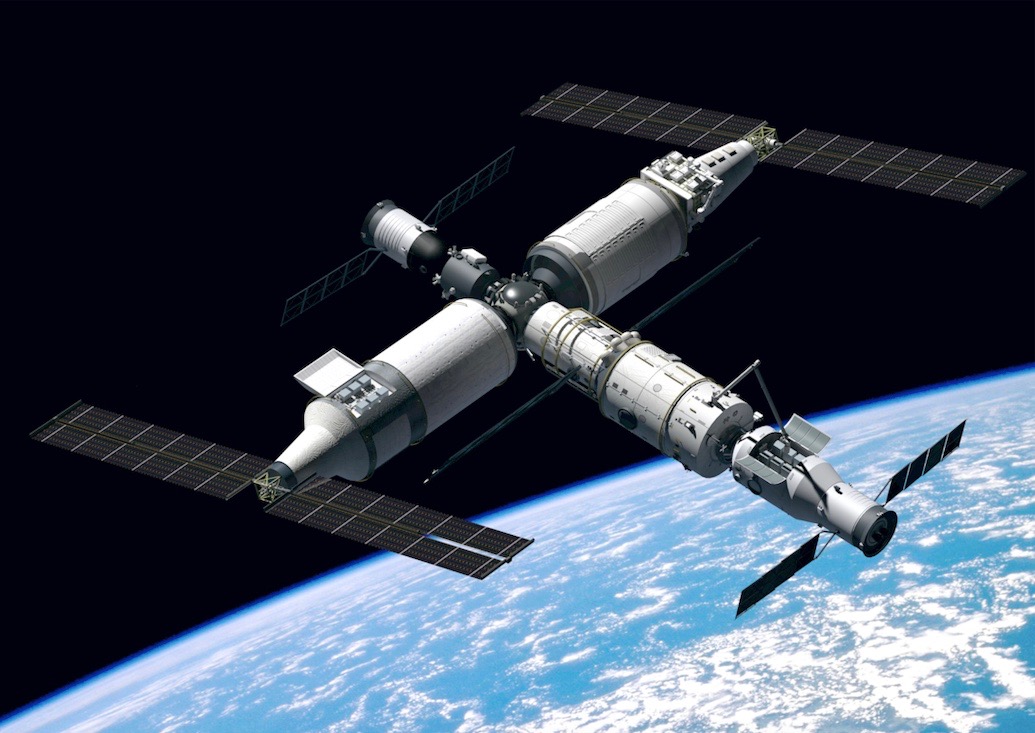China plans to open its Tiangong space station for tourism within a decade
China is encouraging commercial space tours.

China is looking to spark interest in space tourism by opening its soon-to-be-completed space station to everyday citizens.
Yang Liwei, who made history in 2003 by becoming China's first astronaut in space, told Chinese media earlier this month that people without formal astronaut training could soon visit the Tiangong space station.
"It is not a matter of technology but of demand," Yang said when asked if the general public would be able to tour Tiangong. "And it can be realized within a decade as long as there is such demand."
Yang was speaking as a member of the Chinese People's Political Consultative Conference (CPPCC), which forms part of China's ongoing annual political sessions in Beijing. Adding further weight to the comments was Zhou Jianping, known as the chief designer of China's human spaceflight program, who later said the country's Shenzhou crew spacecraft could be used for space tourism. Taken together, the comments suggest that China is looking to establish a market for space tourism.
Related: The latest news about China's space program
But first, China needs to complete the three-module, T-shaped space station and make it fully operational. China plans to launch six missions this year to complete Tiangong. These will be launches of two new modules, a pair of cargo supply missions and two crewed missions, Shenzhou 14 and Shenzhou 15. The two three-person missions are also expected to carry out the first crew handover, which will temporarily see six astronauts aboard the space station.
But Shenzhou spacecraft, which launch from Jiuquan in the Gobi Desert on an established Long March 2F rocket, won't be the only option for getting tourists into space. China is working on a reusable rocket for human spaceflight, which would be capable of launching a new, larger and partially reusable crew spacecraft to the space station, Space.com previously reported. The new approach would mean more people could fly to space at once.
Get the Space.com Newsletter
Breaking space news, the latest updates on rocket launches, skywatching events and more!
Whereas Shenzhou spacecraft can transport only three astronauts, the new generation of crewed space transportation vehicles will be capable of carrying six to seven astronauts, Huang Kewu, a human spaceflight official with the country's main space contractor, the China Aerospace Science and Technology Corporation, said last year.
Commercial options are also being developed. CAS Space, a commercial spinoff of the Chinese Academy of Sciences (CAS), is aiming to offer rides to space for tourists as soon as 2025, apparently drawing inspiration from Blue Origin. Meanwhile, space plane company Space Transportation is developing a "rocket with wings" for space tourism and point-to-point travel, targeting a first suborbital flight in 2025. Orbital flights are planned for around 2030.
Wu Ji, a researcher with the CAS' National Space Science Center, told the Beijing Review last year that he hoped Chinese companies could compete in the international space tourism market. "Commercial programs can help lower costs and improve the efficiency of space activities, which will also benefit the traditional players in this area," Wu said.
China's first space-tourism flights may not take off for a few years, but the country seems set on establishing multiple ways for tourists to reach space.
Follow us on Twitter @Spacedotcom and on Facebook.
Join our Space Forums to keep talking space on the latest missions, night sky and more! And if you have a news tip, correction or comment, let us know at: community@space.com.

Andrew is a freelance space journalist with a focus on reporting on China's rapidly growing space sector. He began writing for Space.com in 2019 and writes for SpaceNews, IEEE Spectrum, National Geographic, Sky & Telescope, New Scientist and others. Andrew first caught the space bug when, as a youngster, he saw Voyager images of other worlds in our solar system for the first time. Away from space, Andrew enjoys trail running in the forests of Finland. You can follow him on Twitter @AJ_FI.









